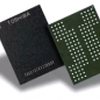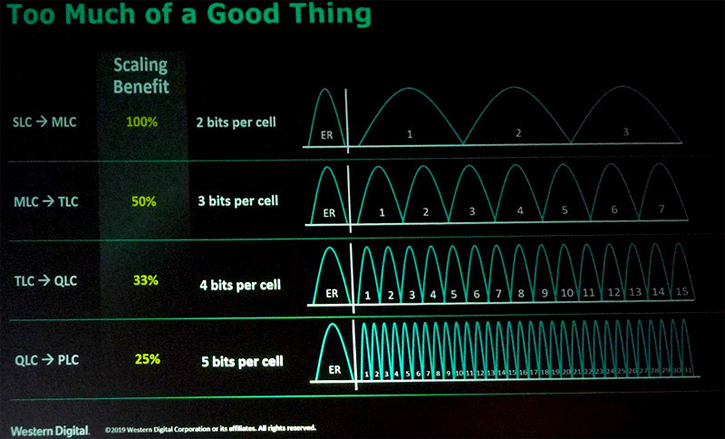NAND flash memory products have seen many stages of development and are evolving continuously. SLC is very expensive, MLC as well, TLC currently is the sweet spot and yes, this year we've already reviewed the QLC based NAND products.
That combined with more layers per package increase storage volumes and lower prices. Each time you step it down a notch (adding more bits to write in one cell), you'll lose a number of write cycles but also it will have an effect on performance. Toshiba is trying the next step, after QLC they are developing and researching PLC. PLC and is short for Penta level cell and the technology would store five bits per cell.
The word is out at Toshiba and WD (Sandisk) they already have working prototypes. it remains to be seen if this tech will actually make it to viable production lines, as it is increasingly more complex. PLC would require 32 different types of voltage.
New NAND Storage Development: SLC, MLC, TLC, QLC NAND ... going for PLC



